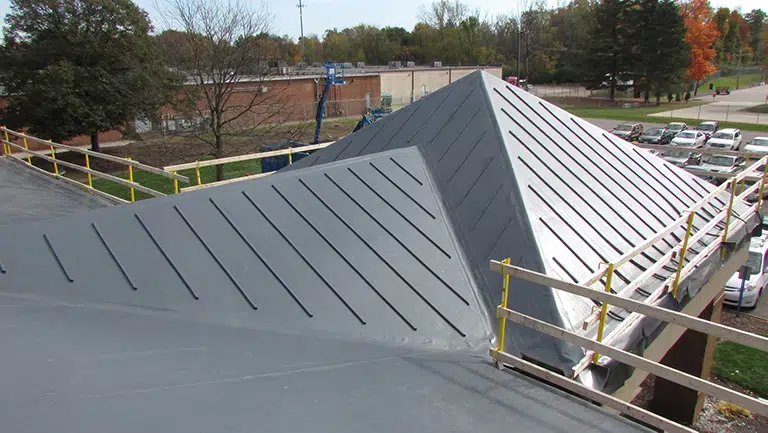Often times, facility managers inherit a backlog of problems due to long-term reactive facility management and run-to-failure roof management. With proactive, planned life cycle management, it is possible to eliminate one or more roof system capital renewals over the total life cycle of a building. What if this could be done on over 50% of the building inventory or perhaps 70% portfolio wide? Depending on the size of the portfolio, a programmatic management plan could save millions or hundreds of millions of dollars.
The following 7 elements are required when developing a comprehensive facility asset management plan:
1. Inventory each roof asset and record the roof system type. Identify:
- Age
- Defects/General Condition
- As-Built Data (i.e. roof type, insulation, square footage, drainage, slope, deck type, flashing type and quantity, number of penetrations and mechanical equipment, etc.)
2. Thoroughly assess the condition of each roof system by collecting deficiency data and quantity. This will help you establish a Condition Index.
3. Analyze each system from a total cost of ownership perspective & determine whether repair improvements will extend the service life and lower total cost of ownership over the remaining service life of the roof asset.
- Total Cost of Ownership = Total Project Cost + Operating Costs + Capital Renewal or Deferred Maintenance + Decommissioning
4. Calculate and understand the key metrics of a qualified condition assessment for each roof system:
- Condition Index (CI)
- Total Service Life (TSL) and Remaining Service Life (RSL)
- Total Cost of Ownership (TCO) of each roof system annually over the total service life and total savings available under the remaining service life
- System Criticality Index (SCI)
- Mission Dependency Index (MDI)
5. Create an objective prioritization of capital renewal projects, or expense repairs and maintenance work.
- By combining the MDI, SCI and CI for each roof system, an objective, independent and scientific “Triage Score” can be set for each capital renewal project. This score should also include a ROI or TCO savings.
6. Create different spend plan scenarios that demonstrate impact on the current & future capital renewal backlogs. Constrained budget reports are critical for showing what spend levels will be required to maintain or buy down the current capital renewal backlogs, and how this will affect the roof condition over the life of the spend plan.
- 5 Year
- 10 Year
7. Create standard and custom reports that highlight spend plans, capital plans, historical metric accountability and KPI reports.
Contact us to learn more about our roof asset management services.

